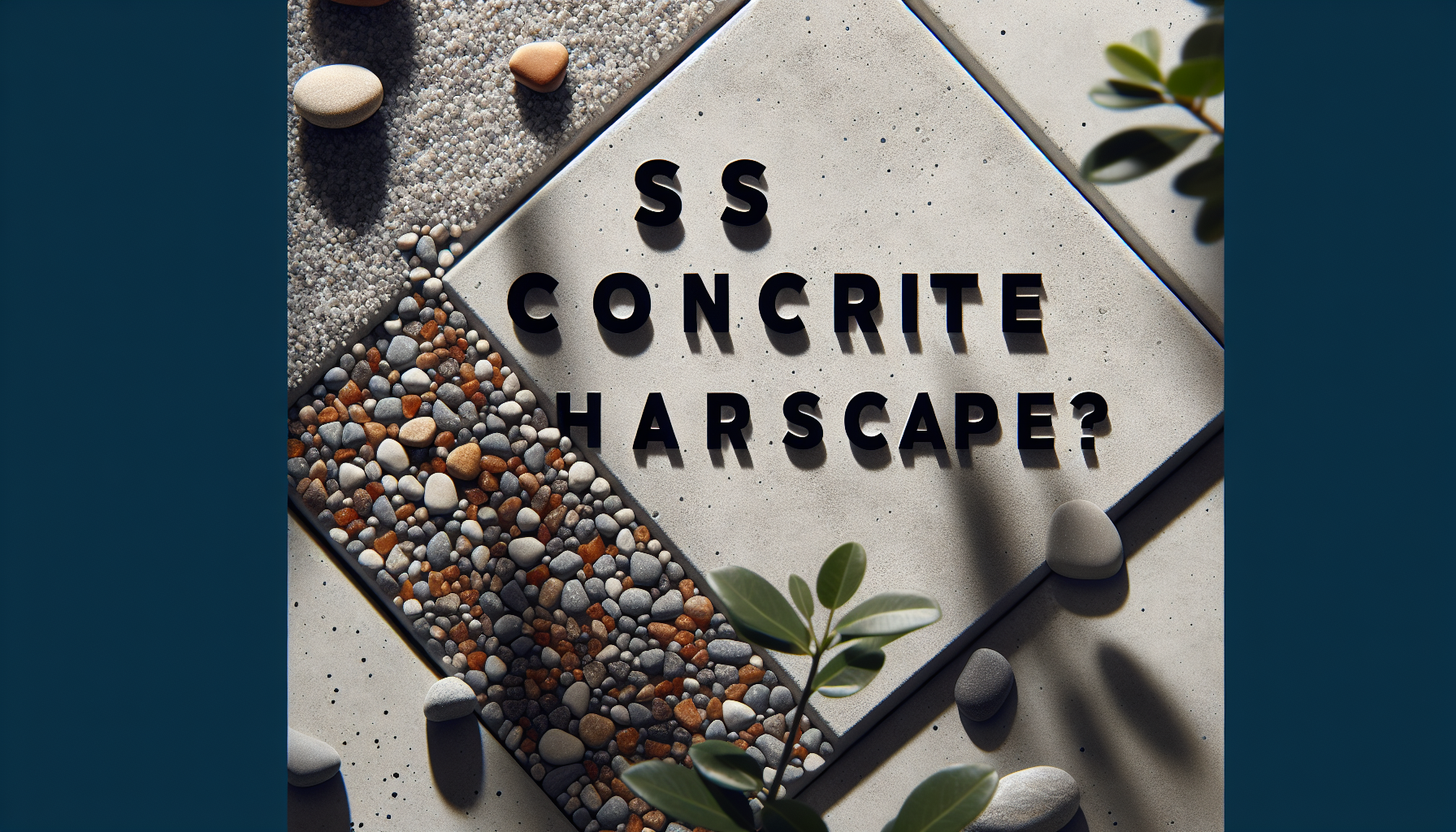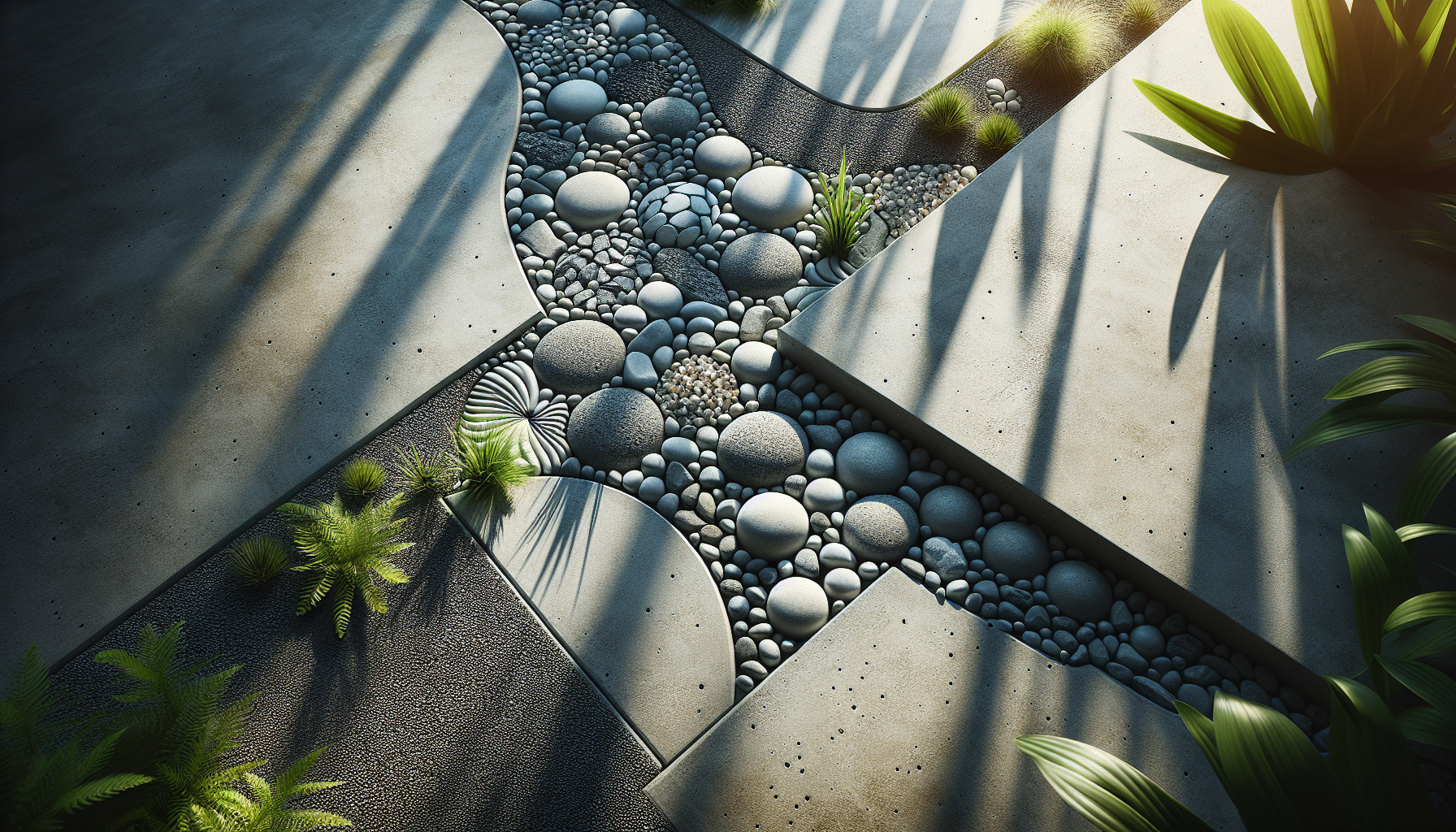Is concrete a hardscape? This question often arises when planning landscaping projects. If you are considering different elements for your outdoor spaces, it’s important to determine what qualifies as hardscape. Let’s uncover the details together.

Understanding Hardscape
Hardscape refers to the non-plant elements of landscaping. These elements include materials like stone, concrete, brick, metal, and wood that add structure and functionality to your outdoor space. Hardscapes help define areas, provide surfaces for walking, and can enhance the aesthetics of your property.
The Role of Concrete in Hardscaping
Concrete fits well within the hardscape definition. It is a durable, versatile material used in various outdoor applications. You can use concrete for walkways, patios, driveways, retaining walls, and many other functions. Because of its toughness and adaptability, concrete is a popular choice for many hardscaping projects.
Types of Concrete Hardscape Features
When considering concrete as a hardscape, you will find several important categories:
1. Concrete Patios
Concrete patios offer a great place for outdoor gatherings. They provide a solid, level surface suitable for furniture and activities. With various finishes available, including stamped, stained, or polished, you can customize the look to match your style.
2. Concrete Walkways
Concrete walkways help guide visitors through your yard. They can connect different areas of your property, ensuring safe and easy movement. You can design walkways in various shapes and sizes to complement your landscape.
3. Concrete Driveways
A concrete driveway is both practical and attractive. This surface can withstand heavy vehicles and is easy to maintain. Plus, with options for decorative finishes, you can ensure your driveway enhances your home’s curb appeal.
4. Retaining Walls
Retaining walls made of concrete provide structural support for your landscape. They help manage slope and drainage issues while creating beautiful garden levels. These walls can be designed in various styles to match your preference.
5. Concrete Pool Decks
If you have a swimming pool, a concrete deck can offer a safe and appealing area for lounging. Concrete is resistant to water and can withstand the wear and tear of foot traffic. Choose a textured finish to prevent slipping.
Benefits of Using Concrete in Hardscaping
Concrete has several advantages that make it ideal for hardscape projects. Here are some benefits worth considering:
Durability
Concrete is known for its strength and longevity. Unlike other materials, it can handle heavy loads and harsh weather conditions, making it an excellent choice for outdoor features.
Low Maintenance
Once installed, concrete requires little upkeep. Regular cleaning and occasional sealing can help maintain its appearance without much effort on your part.
Versatility
You can mold concrete into virtually any shape, allowing for creative customization. Whether you prefer modern or traditional designs, concrete can adapt to fit your vision.
Cost-Effectiveness
Concrete is often more affordable than natural stone or custom wood. Although initial costs may seem high, the long lifespan and low maintenance of concrete can save you money in the long run.
Choosing the Right Concrete Finish
Selecting the right finish for your concrete can impact your hardscape’s appearance and functionality. Here are a few popular options:
Stamped Concrete
This process involves imprinting patterns onto wet concrete. Stamped concrete can resemble brick, stone, or tile, giving you the beauty of natural materials at a lower cost.
Stained Concrete
Staining adds color and enhances the concrete’s natural textures. You can choose from various shades to suit your style and create a more vibrant outdoor space.
Polished Concrete
Polished finishes give the surface a sleek, modern look. This type of finish is ideal for contemporary designs and can also enhance the durability of the surface.

Caring for Your Concrete Hardscape
To ensure your concrete hardscape remains in good condition, consider some simple care tips:
Regular Cleaning
Keep your concrete looking fresh by removing dirt, leaves, and debris. A simple broom or leaf blower can suffice, with occasional power washing if needed.
Sealing
Applying a concrete sealant can protect the surface from stains and moisture. It is wise to reseal your concrete every few years, depending on wear and tear.
Repairing Cracks
Minor cracks in your concrete can gradually worsen if left unattended. Filling cracks with appropriate materials can help prevent bigger issues.
Hardscape and Softscape
Understanding the balance between hardscape and softscape is important in landscaping. While hardscape provides structure, softscape adds life through plants, grass, and flowers. Combining both elements can create a cohesive outdoor space.
Combining Different Materials
Using different materials can enhance your landscape’s visual appeal. For instance, pairing concrete with natural stone or wood can create an interesting contrast.
Designing for Functionality
Consider how you will use your outdoor space when combining hardscape and softscape. Think about pathways, gathering spots, and planting areas that will accommodate your lifestyle.
Final Thoughts on Concrete and Hardscaping
In summary, yes, concrete is a hardscape material. Its durability, versatility, and cost-effectiveness make it a popular choice for a variety of outdoor applications. With the right finishes and design, concrete can enhance the beauty and functionality of your landscape.
If you are looking for help with hardscaping or other home services, consider Xclusive Home Services. Located at 14505 N. Hayden Rd., Ste. 101, Scottsdale, AZ 85260, they offer a range of solutions including hardscaping, pool installations, and more. You can reach them at (602) 341-5545 or via email at management@xclusivehomeservicesco.com. Let them help you bring your outdoor space to life!



